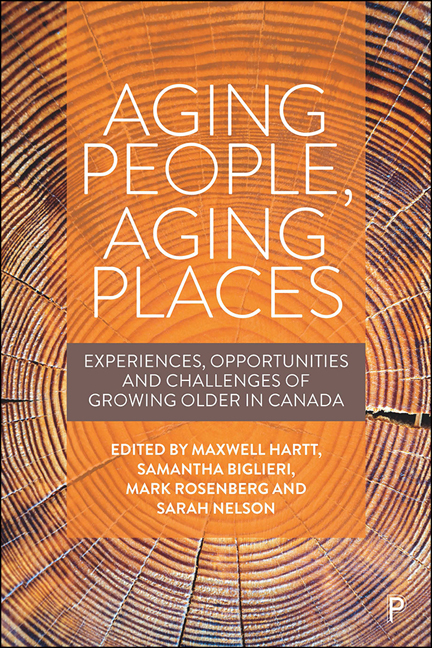9 - New micro-mobilities and aging in the suburbs
Published online by Cambridge University Press: 18 December 2021
Summary
In 2007, the World Health Organization (WHO) launched their Age-Friendly Cities (AFCs) program in response to the global trend towards aging populations and increasing urbanization (WHO, 2007). The WHO anticipates that by 2050, approximately 22% of the global population will be over the age of 60 with the majority residing in sub/urban areas (WHO, 2007). In the Canadian context, one in four residents will be 65 years or older by 2036 with well over 70% residing in (sub)urban communities (PHAC, 2011). Moreover, the intensity of older adults will be most acutely felt in small and mid-sized cities where the mean older adult dependency ratio will grow by 103% and 90% respectfully by 2036 (Hartt and Biglieri, 2018). Given the certainty of demographic change and the heterogeneity of the older adult population (Garvin et al, 2012; Stafford and Baldwin, 2018), there is a time sensitive need to understand how to support older adults who desire to age in place – that is, to live safely and independently in their existing communities (WHO, 2007).
Aging in place, wellbeing, and mobility
Since the beginning of the twenty-first century, there has been a renaissance of academic literature linking built environments and human health in order to address the rising rates of chronic diseases, a warming climate, loss of green space to urban sprawl, and automobile dependency (Frank et al, 2003, 2006). Geographers and planners have played an important role in acknowledging the importance of local built environments to population health and wellbeing throughout the life course (Laws, 1993; Frank et al, 2006; Andrews et al, 2007; Gilroy, 2008; Cutchin, 2009; Garvin et al, 2012; Kerr et al, 2012). In the North American context, the design of many urban built environments has been widely critiqued as not conducive to an active and healthy lifestyle and generally unsupportive of aging in place (Frumkin, 2002; Frank et al, 2003; Gilroy, 2008; Mercado and Páez, 2009; Zegras et al, 2012; Cerin et al, 2017). The challenges of active living in many Canadian built environments is exacerbated for older adults who have limited mobility as they age due to (1) shrinking activity spaces over time (Shoval et al, 2011), (2) onset of physical and cognitive disabilities for some (WHO, 2007), and (3) loss of driving abilities for others (Rapoport et al, 2013).
- Type
- Chapter
- Information
- Aging People, Aging PlacesExperiences, Opportunities and Challenges of Growing Older in Canada, pp. 115 - 132Publisher: Bristol University PressPrint publication year: 2021



